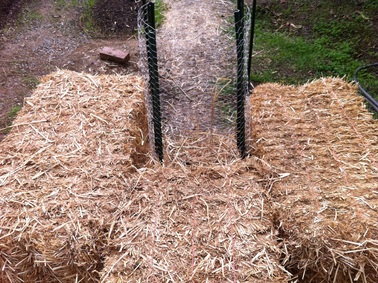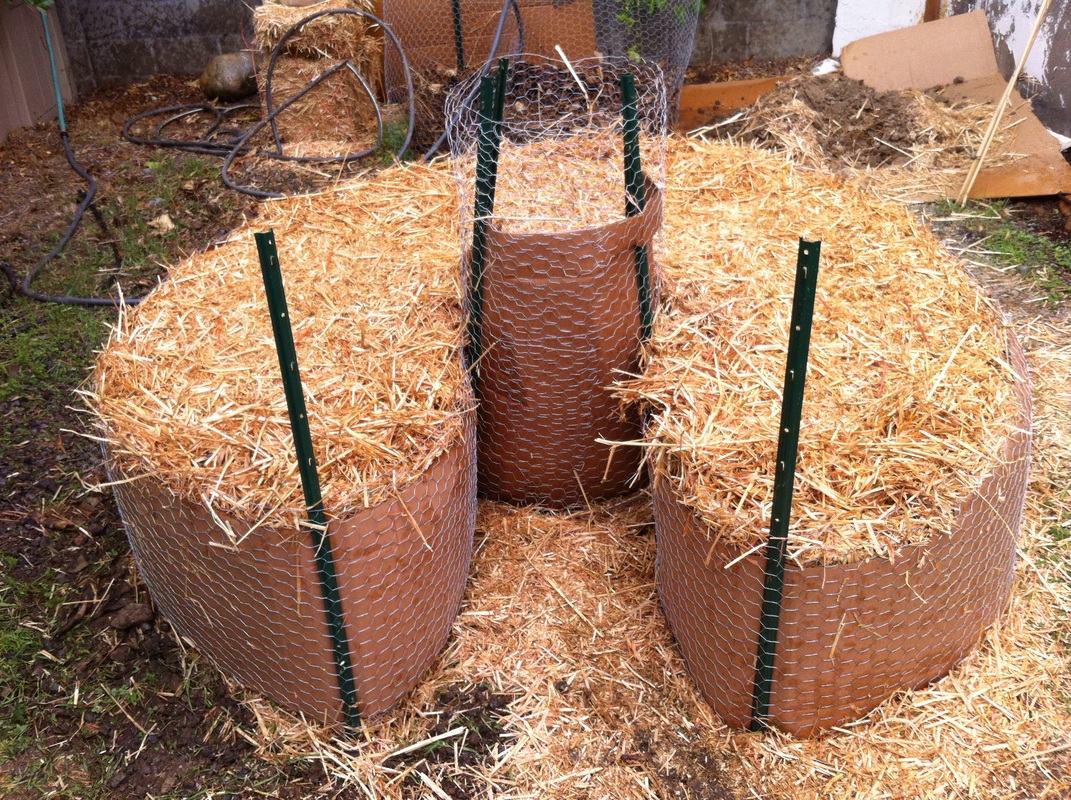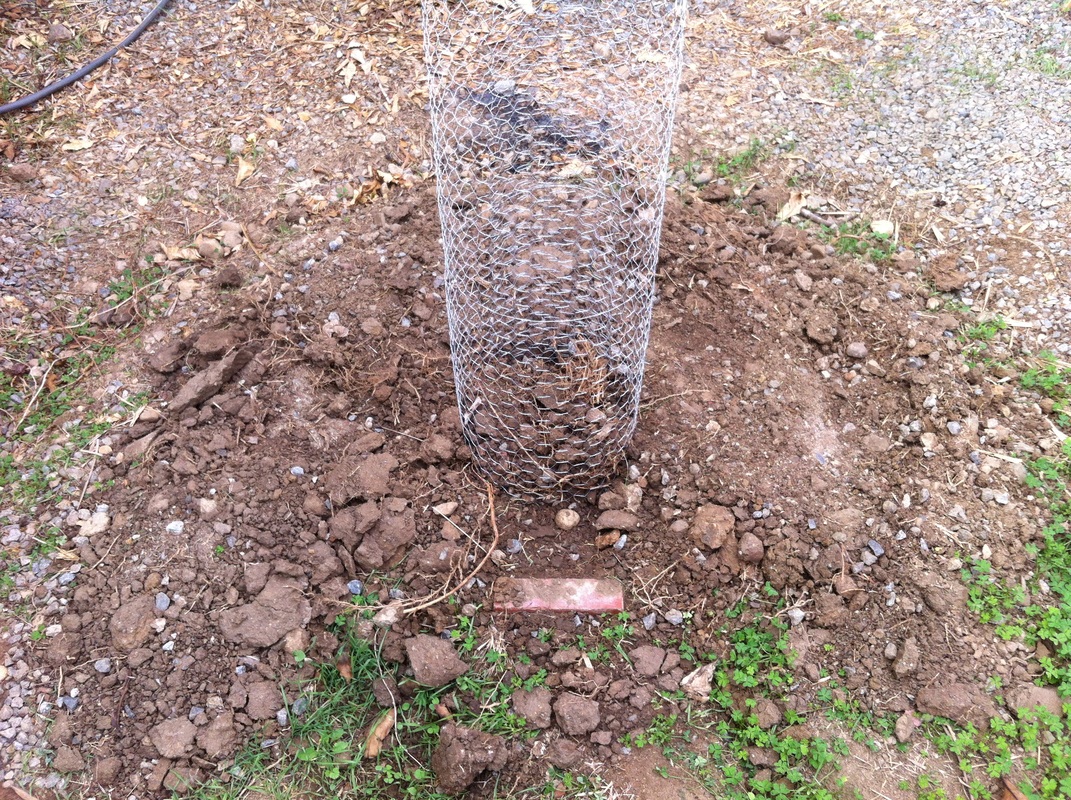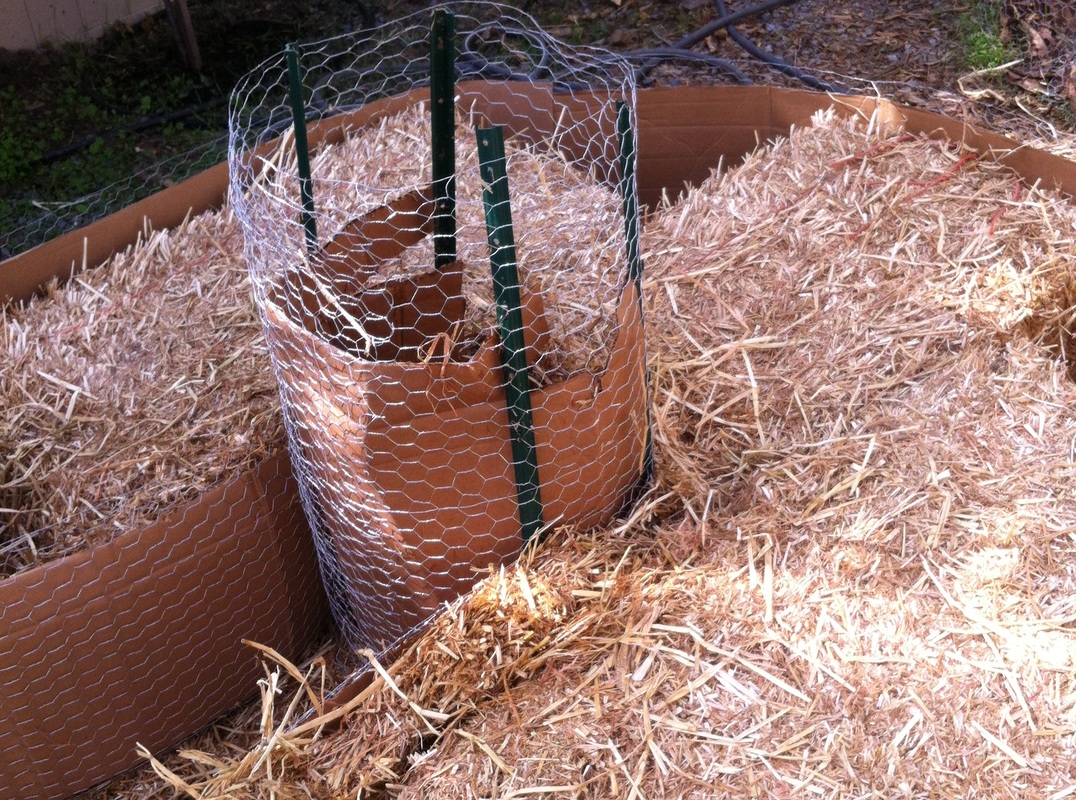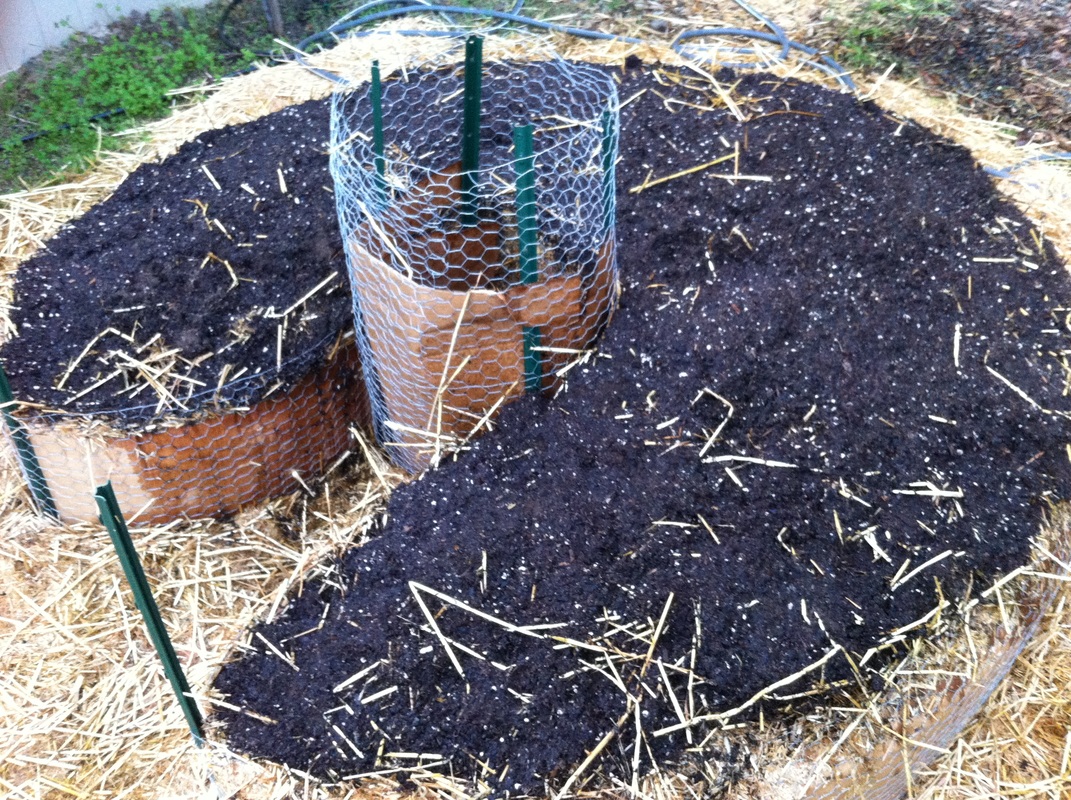Straw Bale Composting Keyhole Garden Bed at the Back Alley Rehab
Not too long ago I started reading a lot about composting keyhole garden beds. Apparently this technique has been used successfully in locations that are prone to both drought and torrential downpours. Basically it is a circular raised bed with a column for compost and worms in the center and a pathway for walking toward the central basket. As water and food waste is added to the central compost area, worm activity moves nutrients into the surrounding garden bed.
|
Essentially, the compost basket becomes a fuel cell for the garden. I love systems, and I had been frustrated by the idea of gardening in a small space where I could not have a system of animals and plants to help feed each other, so naturally I wanted to try this technique for myself. I mapped out an area six feet across and rolled a piece of chicken wire into a column about a foot and a half across. That would be my compost basket. The next issue was how to build the bed. After giving it some thought, I decided to combine the
To get started I jammed three bales together and shortened the central one a little so that together they roughly filled out a circular area. Then I wrapped the bales in chicken wire and lined the wire with cardboard. There were gaps left between the bales and the cardboard walls and I shoved as much straw into those gaps as I could. Then I cut the strings of the bales and there it was--an over-sized circular straw cake!
had not pulled my fingers out they would have been burned! Wow! I knew that compost got hot and had even seen it steam, but somehow it surprised me yet again. I needed to wait a few weeks before planting, but in the meantime I started filling the compost column with layers of straw and juicer pulp, and some red wiggler worms to get things going.
|
composting keyhole technique with the straw bale raised bed technique. There were several reasons for this, the first being that the straw was readily available. But also, since there is a utility easement in the alley, permanent improvements are frowned upon. In a year's time the straw bales would likely become compost, which I could then spread around the plants. And if I wanted to, I could always make another straw bale composting keyhole garden bed.
I sprinkled some fertilizer on top and watered it thoroughly. A few days later I covered it with soil and watered some more. Then I more or less forgot about it.
But a few days afterward, as I walked around the back of the structure, I detected a very slight odor. I walked around the structure and backand forth and finally dug my hands into the soil. To my surprise it was hot. Not just warm, but literally steaming hot-- hot enough that if I |
More about the back alley rehab. |
